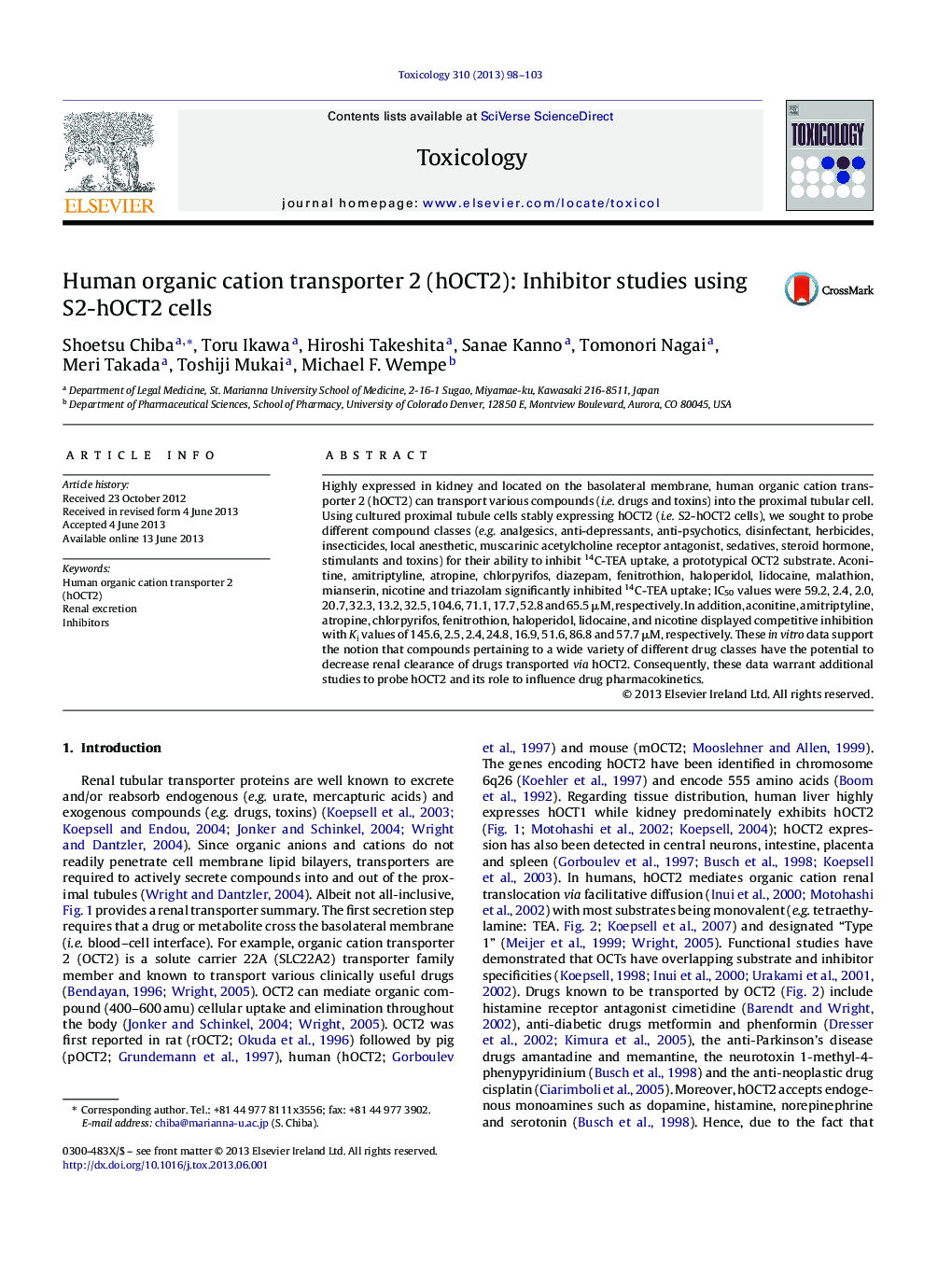| Article ID | Journal | Published Year | Pages | File Type |
|---|---|---|---|---|
| 2595635 | Toxicology | 2013 | 6 Pages |
Highly expressed in kidney and located on the basolateral membrane, human organic cation transporter 2 (hOCT2) can transport various compounds (i.e. drugs and toxins) into the proximal tubular cell. Using cultured proximal tubule cells stably expressing hOCT2 (i.e. S2-hOCT2 cells), we sought to probe different compound classes (e.g. analgesics, anti-depressants, anti-psychotics, disinfectant, herbicides, insecticides, local anesthetic, muscarinic acetylcholine receptor antagonist, sedatives, steroid hormone, stimulants and toxins) for their ability to inhibit 14C-TEA uptake, a prototypical OCT2 substrate. Aconitine, amitriptyline, atropine, chlorpyrifos, diazepam, fenitrothion, haloperidol, lidocaine, malathion, mianserin, nicotine and triazolam significantly inhibited 14C-TEA uptake; IC50 values were 59.2, 2.4, 2.0, 20.7, 32.3, 13.2, 32.5, 104.6, 71.1, 17.7, 52.8 and 65.5 μM, respectively. In addition, aconitine, amitriptyline, atropine, chlorpyrifos, fenitrothion, haloperidol, lidocaine, and nicotine displayed competitive inhibition with Ki values of 145.6, 2.5, 2.4, 24.8, 16.9, 51.6, 86.8 and 57.7 μM, respectively. These in vitro data support the notion that compounds pertaining to a wide variety of different drug classes have the potential to decrease renal clearance of drugs transported via hOCT2. Consequently, these data warrant additional studies to probe hOCT2 and its role to influence drug pharmacokinetics.
